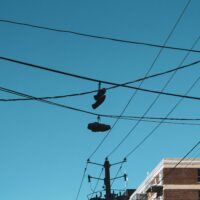 1
1

Image by Sigmund.
If the US economy is in such great shape why are there so many poor in America and why is there such inequality in the country?
According to The Economist we are entering the golden years for American workers. After decades of the closing of factories, the loss of blue-collar jobs, wage stagnation, and a buyers’ market for workers, we have entered a new era according to the latest issue of this magazine. Its editors point to labor shortages, rising wages, and the trickling down of the benefits of the digital economy to the common worker. The Economist also cites Gerald Auten of the Treasury Department and David Splinter of the Joint Committee on Taxation, a nonpartisan group in Congress, who similarly question whether inequality exists or is increasing.
They join former US Senator Phil Gramm (one of the congressional architects of the Reagan tax cuts back in 1981 and author of the 1999 Gramm–Leach–Bliley Act which overturned the 1933 Glass–Steagall Act which had separated commercial and mortgage banks and who repeal led to the 2008 economic crash) and his co-authors who penned the 2022 bestseller The Myth of American Inequality declaring the poverty and inequality in America has fallen since 1947.
Additionally the mainstream press points to record low unemployment and high employment, failing inflation (including energy costs) as signs that we have never had better in America. This too is the story Joe Biden wants to tell as he contemplates a second term as president.
But somewhere out there, there is a disconnect with the American people and reality. Ignore first the trendlines that The Economist picks are short term and there is no indication they will last, even if accurate. For example, by the time the December 2, issue of this magazine came out there were signs of a tightening labor market as the number of job listings was rapidly dropping and also the support programs in place during the pandemic that lifted many out of poverty were ending or had ended. . Ignore also that Gramm overlooks the fact that from the mid-1970s to the present many of the gains from 1947 were stalled, eroded, or reversed by the time he became a legislator.
Beyond these cheery discounts of inequality, consider a few hard facts.
Based on Census data, Time Magazine reports that “the U.S. poverty rate saw its largest one-year increase in history. 12.4% of Americans now live in poverty according to new 2022 data from the U.S. census, an increase from 7.4% in 2021. Child poverty also more than doubled last year to 12.4% from 5.2% the year before.” Poverty, for a single person, or for a family of three, is defined at living below $13,590 or $23,000 per year respectively. We have approximately thirty-eight million people living in poverty according to that standard. But tell me what single person or family of three can live comfortably at those incomes or even at double that. Real poverty, as measured by a reasonable income, is probably double that figure. By comparison, Michael Harrington’ classic 1962 The Other America declared there to be forty million poor people in the US. In real numbers, little has changed in sixty years in terms of the poor population.
In 2023, the top ten percent of earners controlled sixty-nine percent of the wealth in America, the bottom fifty percent controlled barely one percent of the wealth. According to Statista, there has been no discernible shift in these trend lines going back to 1990, and there is no indication that it will change in the future. In 2022, on average White Caucasian households had about six times as much wealth as a Black household and five times as much as a Hispanic household.
The ten richest Americans are worth one trillion dollars, more than the total assets of the bottom fifty percent. In the 1970s the CEO to typical worker pay ratio was approximately 30-to-1; in 2022 it was 344-to-1. Since 1978 CEO pay has increased 1322%.
One could cite even more statistics countering the rosy picture painted by The Economist, Gramm, and other inequality deniers. But the broadest point is that there is little evidence that inequality is abating and that we are entering a new golden age of capitalism for workers. Talk to the average person on the street or in the grocery store who is struggling to make ends meet, they will tell you a different story. For those, though, who disagree, Bah, humbug inequality.
The post Inequality in America? Bah, Humbug! 2 appeared first on CounterPunch.org 3 .
This content originally appeared on CounterPunch.org 4 and was authored by David Schultz.